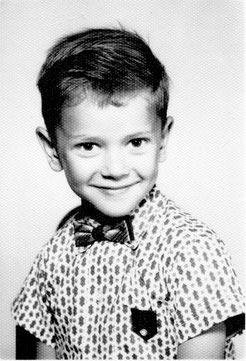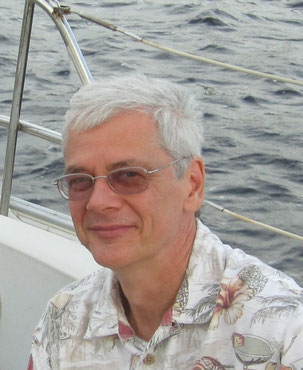
Rod Roskom is a man of many aspirations. Yet he cannot give less than 100% to things that are important to him; family, nature, music, art. To incorporate these passions into a forty hour work week had not been easy. Now retired, Rod looks forward to having more time for creativity. A brief synopsis of his journey and critique of his work follows:
In 1955 Rod was born to a family in Seymour, Wisconsin. He was the last of five children most of whom were grown and had moved out of the home. Rod showed an early inclination for artistic expression and both parents sought to nurture his abilities. His parents owned a greenhouse on their land. His father also worked in a canning factory and brought home discarded labels for little Rod to use as drawing paper. Rod’s mother would color with him showing him how to outline and shade. Early on, Rod’s appreciation of nature was evident in his art. His depictions of various animals and insects were more sophisticated than you would expect from a young child.
At the same time, Rod was attracted to music and his mother encouraged that ability by teaching him how to play the organ. When he reached high school, Rod started to forsake his passion for art and became more interested in music. He placed each time he entered the Milwaukee Music Festival; winning first place in 1972 with his performance of Bach’s Toccata and Fugue in d Minor.
In the 70's and 80's, Rod earned his living performing in clubs throughout the mid-West and Canada. He played keyboards while singing standards and current pop tunes. Eventually, he tired of travel. So, he went back to school and earned a BS Degree in Electrical Engineering from the University of Wisconsin. He has worked as an avionics software engineer since 1989. Never leaving music far behind, Rod transitioned into being a church organist playing at churches where he lived.
In 2010, Rod moved to Southport, North Carolina to escape the cold and snow. Working as an avionics engineer from home until retirement in 2016, He is currently Associate Director of Worship and Music/Organist at Saint Peter Lutheran Church in Southport. Rod dabbled in art over the years but nothing serious until 2011 when he met a woman who loves art, music and his passion for life. She states she enjoys his artistic eye and how he points out light and shadow; the shape of an animal in a cloud or a mouse in a half eaten piece of toast. Things she says she would miss. Still, she was not aware of the extent of his talent. One weekend she pulled out the acrylic paints and brushes given to her as a Christmas present and suggested she and Rod play. She was pleasantly surprised. With her encouragement, Rod’s early passion for art resurfaced. He is painting as enthusiastically as he plays music.
Rod Roskom is a landscape artist. He paints what he sees and living near woods and the ocean provide unlimited possibilities. He is equally alert to composition and detail and he is able to transfer his awareness into a two dimensional experience for others to enjoy. His medium is acrylic paint applied to paper. He does not use the often flat technique used by so many acrylic artists, He initially thins the paint and applies layers of washes giving the background depth. Then the medium gets heavier with the details. His paintings are realistic yet there is a touch of whimsy.

All the elements of good design are present in his paintings and there are a few
that are executed very well. It is the use of his best techniques that help create his style. The compositions are cohesive and the elements are arranged to pull the eye into the scene. The scale
is intimate. Balance and symmetry add a sense of calm yet there is movement in the various elements that bring the pieces to life. His skill in representing reflections is excellent. An exciting
aspect of Rod Roskom’s painting is the decisions he makes in relation to color and temperature that allow you to imagine the climate. Like his music and his personality, Rod’s art has a smooth
paced rhythm. His paintings allow one to meander; imagine themselves inside the scene.